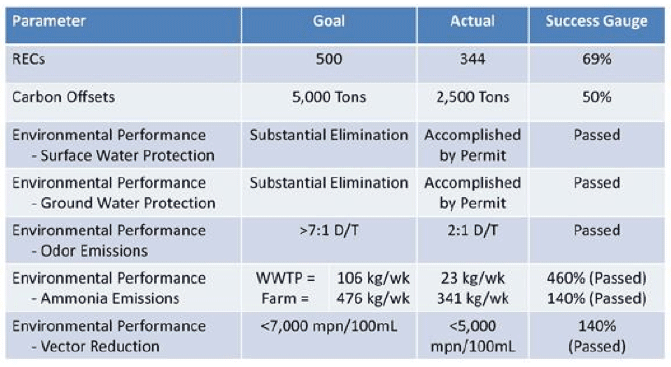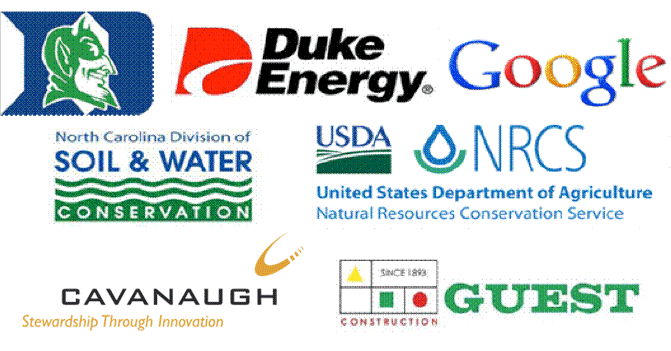
A Renewable Energy & Innovative Animal Waste Treatment Facility
The project began as the utility companies of North Carolina began to evaluate the potential of making renewable energy from agricultural sources. In 2006, Duke Energy approached the Nicholas Institute for Environmental Policy Solutions at Duke University and asked the Institute to aid in their assessment. Discussions had already begun regarding North Carolina’s development of a REPS, and the inclusion of swine waste as an energy feedstock was being debated. Given this, Duke Energy determined it was important to assess the potential, and gain a better understanding of how to transform pig waste into power. The Institute agreed to help, and selected Cavanaugh & Associates, P.A. to provide technical assistance, given Cavanaugh’s long-standing experience and recognized expertise in designing agricultural waste management systems. Over the next two years, Cavanaugh worked closely with the Institute and other Duke University staff to develop and evaluate a model for anaerobically digesting swine waste to create a methane-rich biogas that could fuel electricity generators.
[cycloneslider id=”case-study-loyd-ray-farms”]
The team, including Duke Energy, Duke University and Cavanaugh, also believed that, if effort was going to be invested in altering the conventional waste treatment systems used on these farms, the goals should be expanded from just generating renewable energy to also including environmental performance improvement. North Carolina has established environmental performance criteria for new and expanding swine farms that is generally recognized as the litmus-test for success for innovative swine waste treatment. These criteria include the substantial reduction or elimination of the emission of odors, ammonia, and disease transmitting vectors; as well as elimination of the potential for ground and surface waters by nutrients, pathogens, and heavy metals. Given this, Cavanaugh expanded the model to include an environmental treatment system to meet these ambitious goals.
“We will be generating green energy as well as addressing the environmental concerns and then that should enhance the sustainability of these industries, which their economic importance is not debatable, they’re very important to the state of NC.”
C.M. Williams, Ph.D, Director
Animal & Poultry Waste Management Center
Making it Happen: Building a Commercial-scale Swine Waste-to-Energy Project
After a thorough evaluation of the model, and the writing on the wall that the NC REPS was going to include a requirement for renewable energy derived from swine waste, the next step was clear: build one! Our project team did just that. In 2008, Duke Energy and Duke University engaged in a partnership to build a first-of-kind, commercial scale swine waste-to-energy project that also meets the NC Environmental Performance Criteria. Given the strong working history of the team, they selected Cavanaugh & Associates, P.A. to design and permit the project.
Cavanaugh started the process with site selection. Armed with the concept design developed in the model, Cavanaugh worked with members of the North Carolina swine industry to identify candidate farms and moved through a selection process. Ultimately, the Loyd Ray Farm was selected – a commercial-scale farm that houses 8,600 finishing swine near Yadkinville, NC. Cavanaugh assisted the project sponsors in the development of the agreements with Mr. Bryant, the farm owner. In the end, the project sponsors agreed to pay for all aspects of construction, operation, and maintenance of the project, and share in the electricity produced with Mr. Bryant. In return, Duke Energy receives all of the Renewable Energy Certificates (RECs) and Duke University received all of the Carbon Credits produced by the farm for a period of ten years. Duke University shares a portion of the Carbon Credits they receive with Google in exchange for financial assistance with the operational costs for the first five years of operation.
“It would sound pretty crazy at one time, but we see it works.”
Mr. Loyd Bryant, Farm Owner
Interview with Local Station Fox8 in October 2011
The sponsors also sought funding assistance from state and federal sources. In the end, the North Carolina Division of Soil and Water Conservation, and the USDA-NRCS provided funding support for the construction of the project. Cavanaugh assisted the project sponsors through the development of the grant application packages, and facilitating the scrutinizing review of the design by numerous agencies and stakeholder groups. With the capital needs for the construction and operation met, Cavanaugh was authorized to proceed with the detailed design and development of construction plans, as well as obtaining the required permits for construction and operation of the project. The Cavanaugh design included the construction of a new synthetically lined and covered anaerobic digester, a nitrification/denitrification system, a biogas collection and conditioning system, and an electricity generation system.
How it Works:
[cycloneslider id=”case-study-lrf-how-it-works”]
Construction began in August 2010, with Cavanaugh providing construction-related engineering services. The project was commissioned on May 27, 2011 and became the first facility in North Carolina to generate Renewable Energy Credits from a swine production facility. Desiring optimal performance, the project sponsors retained Cavanaugh to operate and manage the system. Under Cavanaugh’s close and careful management, the system has met the environmental performance criteria, based on sampling and analyses performed by independent labs and Duke University faculty.
The innovative and dynamically successful project received state-wide and national news attention, including stories on CNN, the Discovery News Channel, Forbes, the Los Angeles Times, and the Charlotte Observer.
“We want people to take this technology and see what they can do with it. Run with it, Try to spread it across the U.S., across North Carolina.”
Jolanka Nickerman
Program Manager, Google Carbon Offsets Team
Benefits of Keeping the Project Open and Accessible:
Most importantly, the shared goals of the project team are a shared vision of how we can sustain our culture with good food, clean water, clean air, and clean renewable energy. In this regard, the project partners chose not to seek patents or commercial protection for the design of the project. Rather, the team hopes that the “open source” approach will foster continued development, refinement, and improvement of projects such as these.
Results and Looking to the Future:
At the end of the first year of operation, the performance of the system has been impressive. Although there have been challenges with the experimental gas conditioning system that has led to only 70% generation uptime, the overall performance has been outstanding.
Duke now counts the greenhouse gas emission reductions (otherwise known as carbon offsets) toward its voluntary carbon neutrality goal. This project is expected to prevent the release of the equivalent of 5,000 metric tonnes of carbon dioxide per year, which is the equivalent of taking 900 cars off the road. Duke Energy also counts the renewable energy generated by the mictroturbine toward its Renewable Energy and Energy Efficiency Portfolio Standard (REPS) requirements to obtain renewable energy credits. Thanks to the North Carolina Utilities Commission pursuant to Commission Rule -66, Loyd Ray Farms now to qualifies to earn Renewable Energy Certificates (RECs) that are eligible for use by an electric power supplier to comply with the North Carolina Renewable Energy and Efficiency Portfolio Standard established in NCGS § 62-133.8.
Scorecard

Plans are presently underway to replace the faulty biogas conditioning skid, which will result in greater than 90% uptime. The environmental treatment system performance has exceeded expectations, and the farm owner, Mr. Bryant, is evaluating the opportunity to expand his farm, and increase the electricity generation capacity.
Special Thanks


